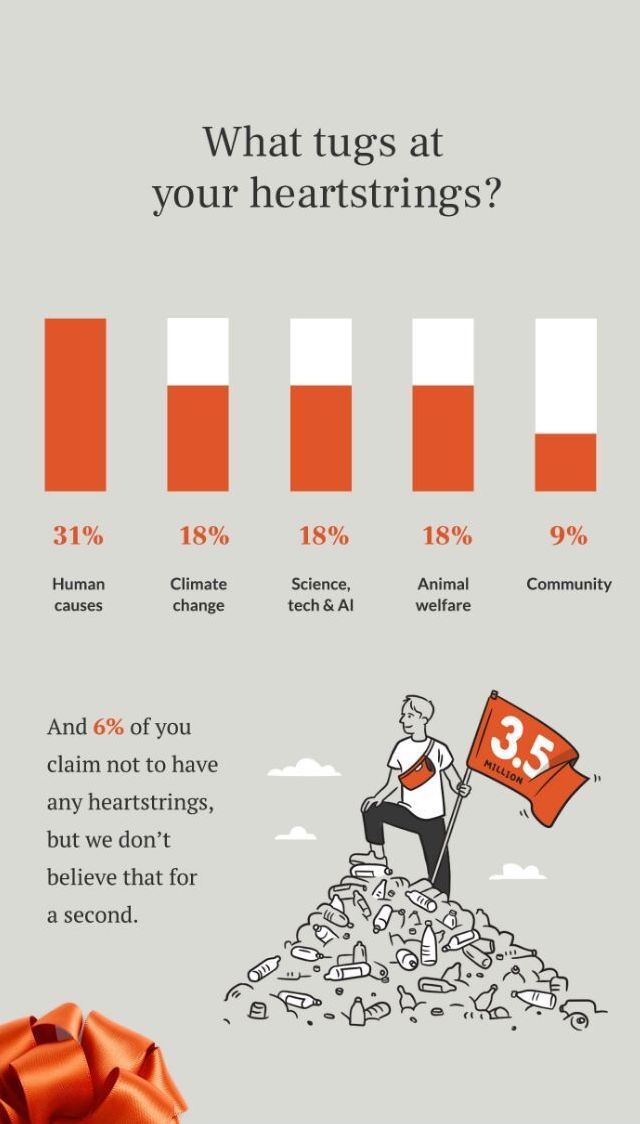The Importance of Diversity, Equity, and Inclusion in Marketing
We learned a lot during Litmus Live Week. From throwing out the rules of grammar to creating dynamic emails with AMPscript, topics ranged from strategy to design and beyond. But one of the topics that cropped up in both expected and unexpected places was the theme of diversity, equity, and inclusion.
One of my favorite talks was the chat between our VP of Marketing, Cynthia Price, and Kevin Tyler, the Insights Director at the UCLA School of Nursing. Yep, the one featured in last week’s episode of Delivering. Kevin and Cynthia dug into some difficult, meaty ideas that we felt were worth expanding on here. So, how—and why—should email marketers (and marketers in general) focus on creating more diverse, equitable, and inclusive experiences?
What is diversity, equity, and inclusion?
First things first: What is DEI?
They’re three letters we hear all the time, but getting on the same page is helpful for understanding a lot of the points that Kevin makes. One of my favorite definitions of diversity, equity, and inclusion comes from the Chief Diversity Officer of the University of Michigan, Robert Sellers:
- Diversity is where everyone is invited to the party.
- Equity means that everyone gets to contribute to the playlist.
- Inclusion means that everyone has the opportunity to dance.
DEI is all about acknowledging differences between people, whether it’s race, gender identity, sexual orientation, religion, age, ability, social economic status, etc. We have to recognize systems that have divided and oppressed people due to those differences and create new systems where everyone can participate equally in our shared community.
Kevin describes how he thinks about diversity as people having different “lenses.”
The life I live is the lens through which I see the world.
The hard part is seeing through other people’s lenses. We all live different lives and have world views shaped by different experiences, but it’s critical that we talk to each other, learn about those differing world views, and incorporate them in our marketing efforts (and beyond).
When it comes to marketing, that manifests in a lot of ways. From coding more accessible emails to tackling issues of racial inequality in national campaigns.
People buy based on values
What DEI practices look like differ from company to company, but what is clear is that people are increasingly buying based on the values expressed by those companies. One report showed that 83% of millennials find it important to buy from companies that align with their values—up from 63% reported two years ago.
Too often, marketers sacrifice what’s human to the altar of growth, sales, and pure transactions. But it’s increasingly important to lead with what’s human, especially as more consumers are buying based on their values. And what’s human is a plethora of voices, viewpoints, and experiences. The world is a big, diverse, ever-evolving place, and our marketing efforts need to take that into account.
That can be hard and scary but, in my opinion, one of the most important points that Kevin made is that, as brands start expressing their values, they need to get comfortable with:
- Losing customers that don’t agree with those values
- Welcoming new customers that share those values
It’s critical to keep in mind that all of this is a long game, not something that happens immediately. You can’t just put up a black square on Instagram for a day and expect sales to increase because of your values. You need to back up your values with your content across channels, over long periods of time.
You need to be a constant ally, not a performative one.
Now’s the time to act
2020 is forcing people to have difficult conversations about all kinds of things. Especially in the U.S., where nationwide protests are forcing hard conversations about race and potential Supreme Court appointments threaten to jeopardize LGBTQ+ rights. Everyone is grappling with these issues.
Now is the perfect time to speak up in your company and see how you can address these issues in your marketing efforts. It’s not easy—and shouldn’t be since they’re such important topics—but it’s something every single company needs to face.
How to do the work
So, how do you actually do that kind of work?
Having an investment in your local community is a good place to start—and goes hand-in-hand with something every marketer is familiar with: getting to know your customers. We’re constantly trying to learn more about our customers, but we should extend that to the communities in which we exist, too.
Kevin brought up the work of Brian Stevenson, author of Just Mercy and founder of the Equal Justice Initiative, and his belief that the only way to better understand others is to get proximate. In other words, get as close as you can to them. In a 2018 commencement speech at Johns Hopkins University, Brian Stevenson described the idea of getting proximate:
You have to find ways, no matter what your field of study, to get proximate to people who are suffering, to get closer to people who are excluded, to go into the parts of the community that other people say you shouldn’t go to… If you find ways to get past the barriers that exclude those who are disfavored… you will discover something transformative. There is power in proximity.
Diversity, equity, and inclusion work is, by definition, transformative. We’re trying to transform our companies and our marketing efforts to be more inclusive of communities which are different than our own. And the only way to do that is by getting to know those communities—their needs, their values, and their challenges—just like we try to do with our typical customer base through surveys, engagement data, and user research.
At Litmus, we try to do this not only through ongoing diversity, equity, and inclusion work and training internally, but also by providing paid volunteer time off (VTO) for all employees to get to know their communities and give back to them. A lot of what we individually learn in the process is shared throughout the company in various Slack channels, team meetings, and during our all-hands meetings. While we certainly have difficult conversations as a team, we welcome those conversations as an opportunity to actually figure out what our values are, instill them in our work, and grow as a company.
On a practical level, we need to take to heart that, as Kevin put it, “Change happens with a bunch of intentional, small decisions.” For marketers actually creating campaigns and building emails, some of those small decisions could be to:
- Make sure your emails are accessible so that you’re inclusive of people using assistive technology.
- Include people of color (POC) and queer couples in campaign imagery.
- Consider the language you use in your marketing.
- Link to causes you support in email newsletters or curated content pieces.
- Engage with your customers on a regular basis to see what they care about beyond your products.
- Push your company to hire staff and work with freelancers from under-represented groups.
- Look outside your typical circle for content contributors for posts, webinars, etc.
- Push back on decisions to ignore social justice movements like Black Lives Matter because they’re “too political” or “might alienate customers.”
- Read books, watch talks, and listen to podcasts that address diversity, equity, and inclusion (suggestions below).
A great example of the fifth suggestion above comes from Bellroy, who asked their customers, “What tugs at your heartstrings?” The follow-up email shared those insights with their subscribers (below) and the answers can help inform their future marketing efforts on top of some of their product decisions.
The most important thing, though, is to commit to being open, honest, and respectful throughout the journey. You may experience challenges when trying to take those small (or big) steps, but being honest about the work and having respectful (if difficult) conversations will allow us to get that work done.
Work worth doing
Diversity, equity, and inclusion are huge topics. They’re difficult topics. And they can be scary depending on your own personal experiences and your company culture. But they are topics worth discussing. Not only because creating more diverse and inclusive campaigns can help drive business, but also because it’s the right thing to do.
Our world—and our customers—are diverse. And marketing is, and has always been, a reflection of the world. We need to do the work to reflect our world more accurately and, in turn, create the more just and equitable world we all deserve.
If you haven’t already, take a listen to Kevin and Cynthia’s talk. It’s a good place to start.
Beyond that, there are a ton of resources to help along the way:
- Kevin mentioned two books worth reading: Just Mercy by Bryan Stevenson and The Color of Law by Richard Rothstein.
- Brooklyn organization Collective has a pandemic-proof DEI toolkit. They’re also working on their anti-racism toolkit, too.
- EDUCAUSE has a big list of DEI resources worth checking out.
- Personally, I’ve found the books Race After Technology by Ruha Benjamin, Design Meets Disability by Graham Pullin, Practical Empathy by Indi Young, and A Web for Everyone by Sarah Horton and Whitney Quesenbery helpful.
- Our own Ultimate Guide to Email Accessibility is a great resource for building more inclusive email campaigns.
- And everyone should listen to the 1619 podcast.

Jason Rodriguez
Jason Rodriguez was the Community & Product Evangelist at Litmus

